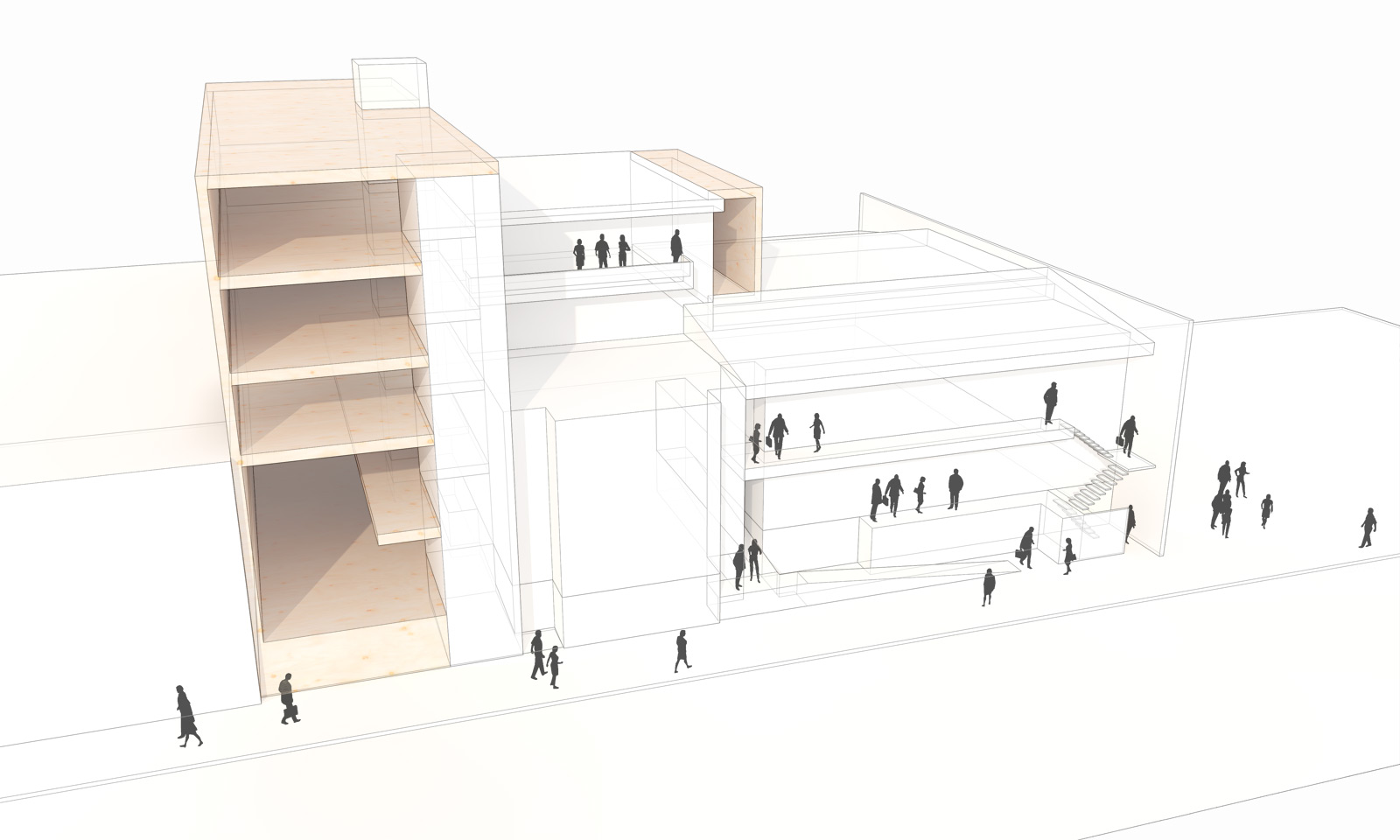 BUILD recently delivered a schematic design package for a dynamic infill project in Seattle’s Fremont neighborhood. The context is mixed-use and urban; having an industrial history, the area is now a destination for good food, drink, and shopping. It’s just a block away from the Burke Gilman trail and within eyesight of the Fremont canal. Coming in with a proud Walkscore of Ninety-friggin-Two, the area is a pedestrian’s paradise. The project sits on one of the last blank spots left in Fremont; Its narrow width of just 30’ is the result of a shared lot with its larger neighbor to the South: a concrete bunker of building. Logistically, the zone and site are thick with land use codes, building codes, and interpretations. To put it simply, the project is complicated.
BUILD recently delivered a schematic design package for a dynamic infill project in Seattle’s Fremont neighborhood. The context is mixed-use and urban; having an industrial history, the area is now a destination for good food, drink, and shopping. It’s just a block away from the Burke Gilman trail and within eyesight of the Fremont canal. Coming in with a proud Walkscore of Ninety-friggin-Two, the area is a pedestrian’s paradise. The project sits on one of the last blank spots left in Fremont; Its narrow width of just 30’ is the result of a shared lot with its larger neighbor to the South: a concrete bunker of building. Logistically, the zone and site are thick with land use codes, building codes, and interpretations. To put it simply, the project is complicated.
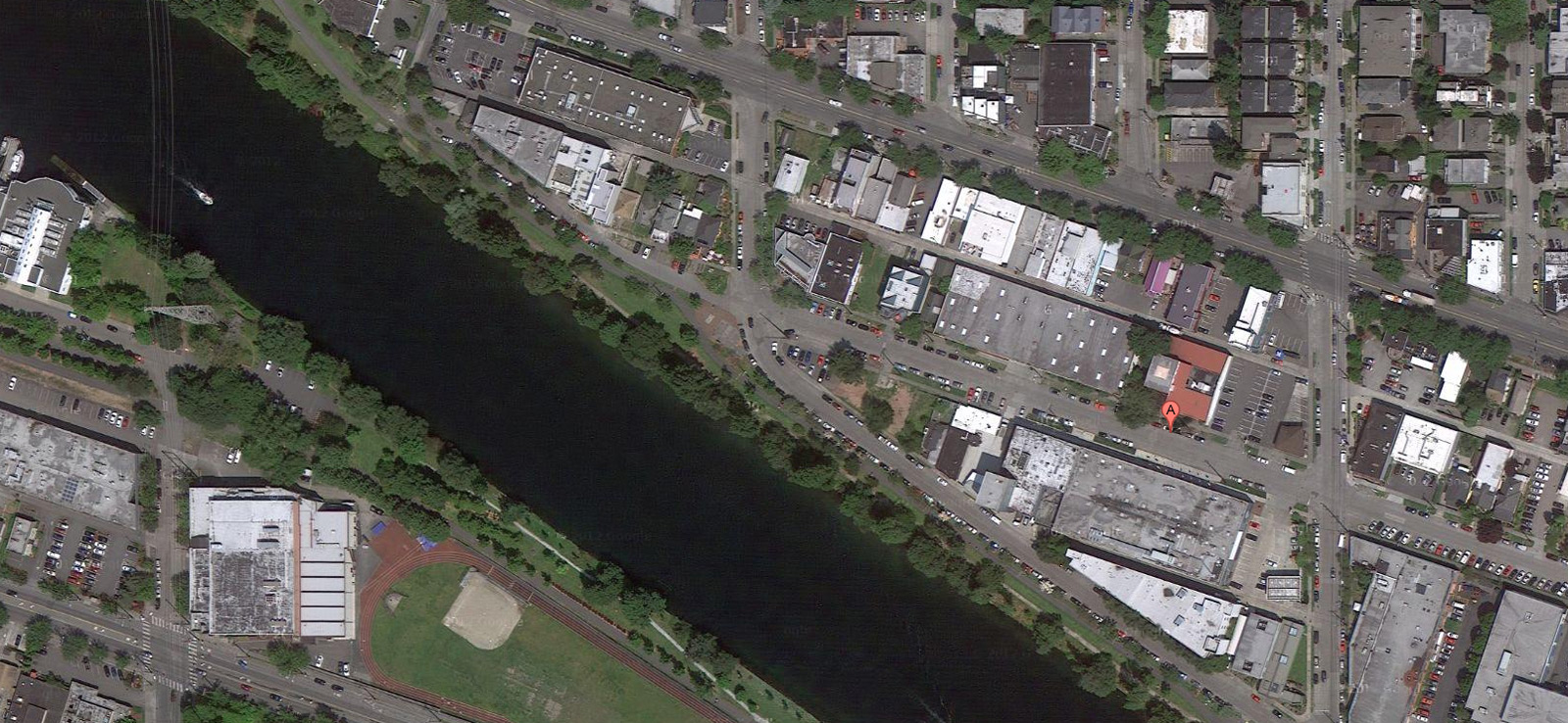
We happily took to the challenge from the moment we got our eyes on the parcel and actually saw tremendous opportunity in spite of tight constraints, a complicated neighbor and stringent building codes. In fact, we saw tremendous opportunity because of these factors. Necessity is the mother of invention; constraints foster creative solutions and rules set the stage for compelling design methods. We dove in head first.
Today’s post is a quick tour of the schematic design package of urban infill design. Using the Fremont Urban Infill project as a case study, we outline the steps, methods, results and deliverables of the schematic design phase. What we like about doing a schematic design package is that it allows the team (owner, developer, architect, builder) to properly and intelligently analyze a particular parcel and determine whether a project is viable before time and money are spent on construction drawings, permits and mobilization. If the project has legs, it will be evident from the schematic design package, and then the subsequent phases of design can begin with confidence.
INFORMATION GATHERING & DOCUMENTATION
The first step is figuring out what’s so. This pertains to whatever information the city has on file for the site and can include previous permits, record drawings, code variances, grandfathered design elements, possible liens on the property, and so on. Any other regulatory agencies should be contacted at this time, including community groups, for possible covenants or protected view corridors. If a survey is not available, it’s usually a good idea to engage a surveyor to produce one. This step also involves walking the site, getting a feel for the area and talking to the owner/users about project goals.
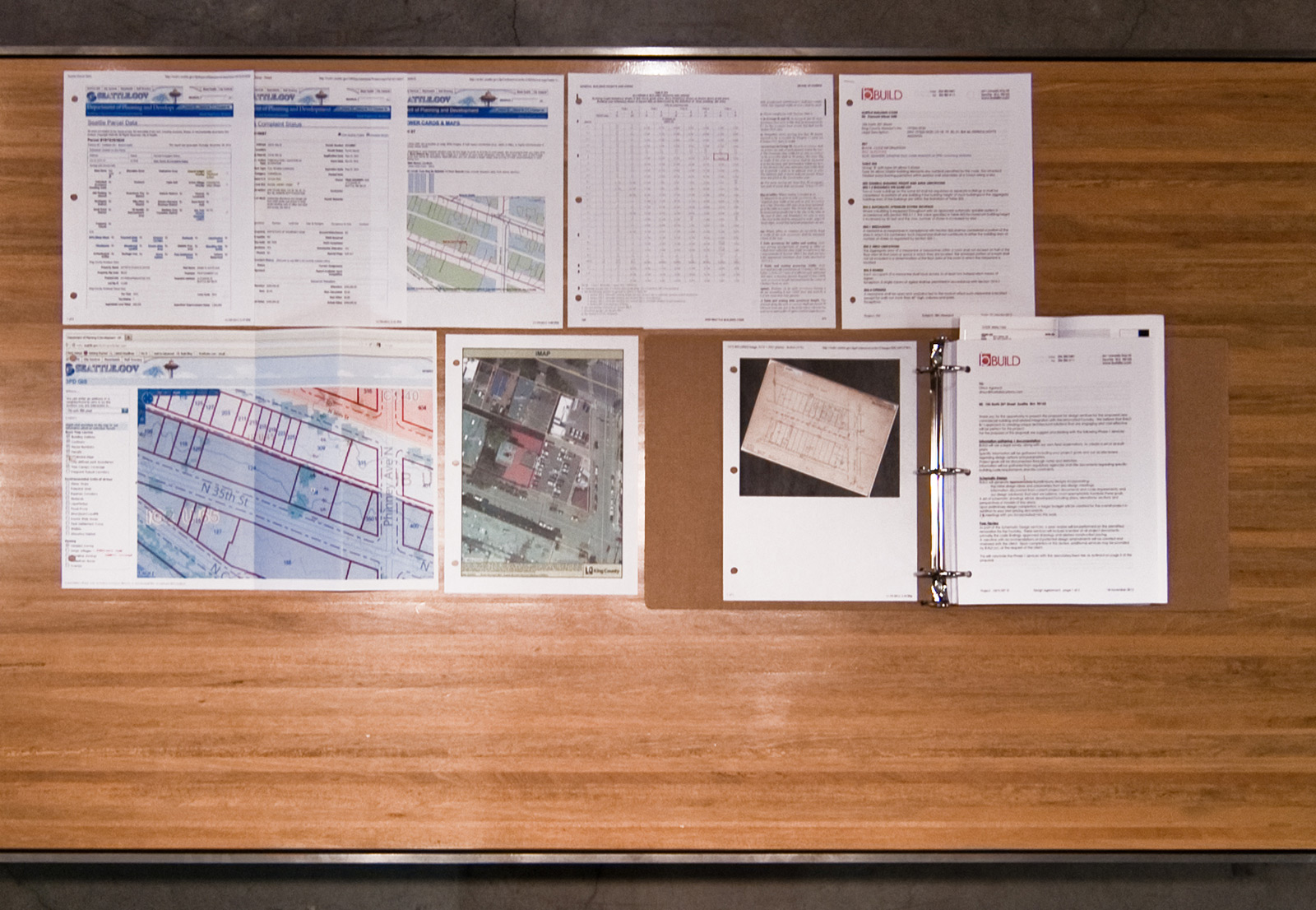
MUNICIPAL CODE REVIEW & DOCUMENTATION
Municipal codes govern what you can (and can’t) do with regard to the size, placement and use of the project. It regulates everything from the property setbacks and height limits to whether screens are required around the garbage dumpsters. Here in Seattle, Chapter 23 of the SMC, which pertains to Land Use, is hundreds of pages long with additional directives to boot.
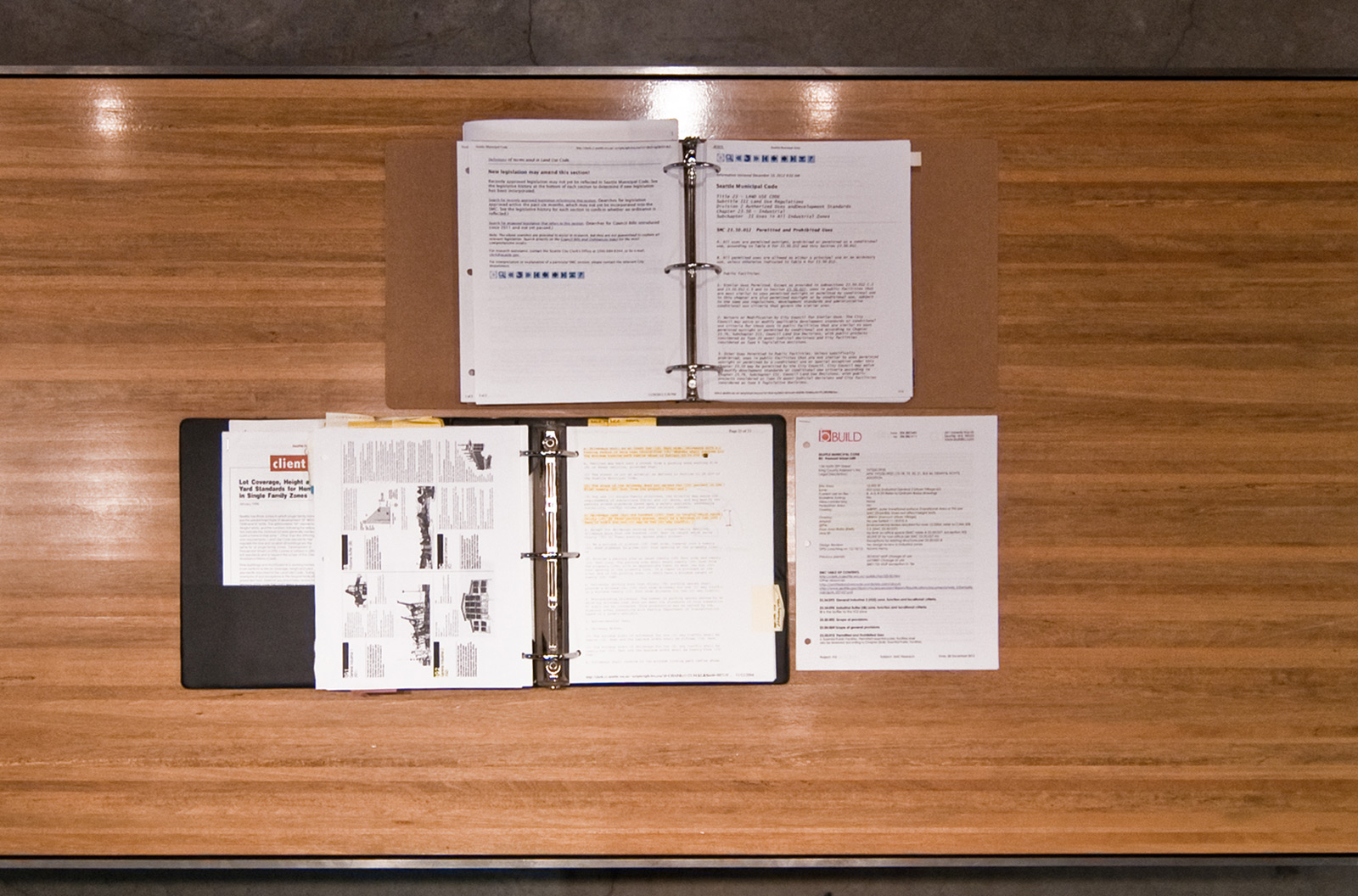
Despite the density of the text, we actually enjoy the code studies. Having a good knowledge of the municipal and building codes allows us to have confidence and command with the design possibilities of a project. It’s an exercise in organization, focus, and asking the right questions. While it’s not glamorous, it’s a necessary step to achieve exceptional architecture. We track the relevant material as notes, condense them down to their essence for the owner(s), generate lots of spreadsheets and then translate all that data into diagrammatic form. And if you ask us, good data should be useful and visually stimulating. The diagram below covers the most important aspects of the Seattle Municipal Code in reference to the Fremont Urban Infill project.
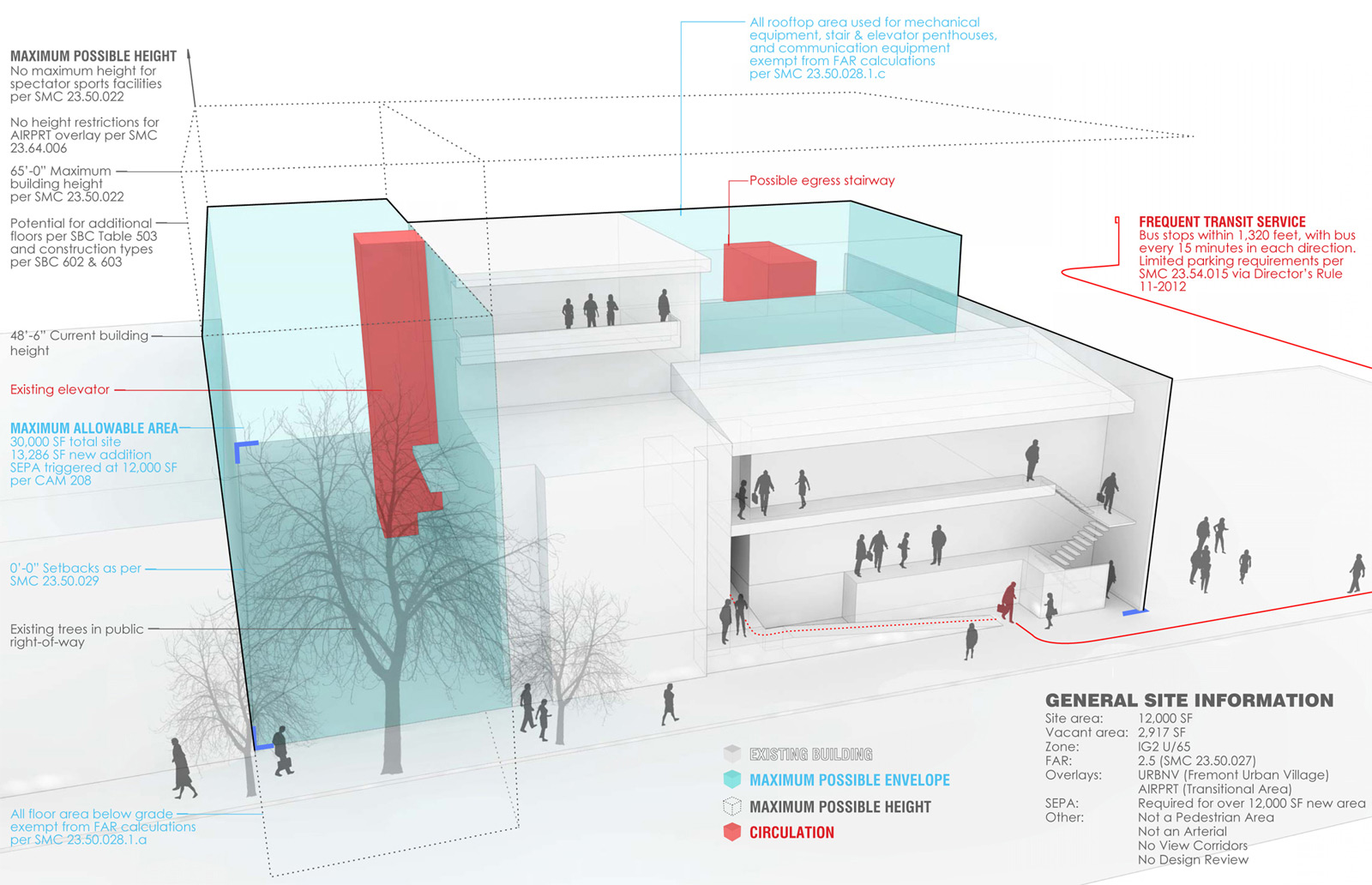
SEATTLE BUILDING CODE REVIEW & DOCUMENTATION
The building code for most cities is typically an amended extension of the International Building Code. By the time you add in the State and City Amendments, it’s a brick of a book; our copy of the Seattle Building Code is an intimidating 750 pages. It regulates everything from the size of a handrail to the maximum distance a person should have to walk through a building before reaching the public right of way. Similar to the municipal code, tackling this book requires patience and discipline. The reward is a good understanding of the design possibilities.
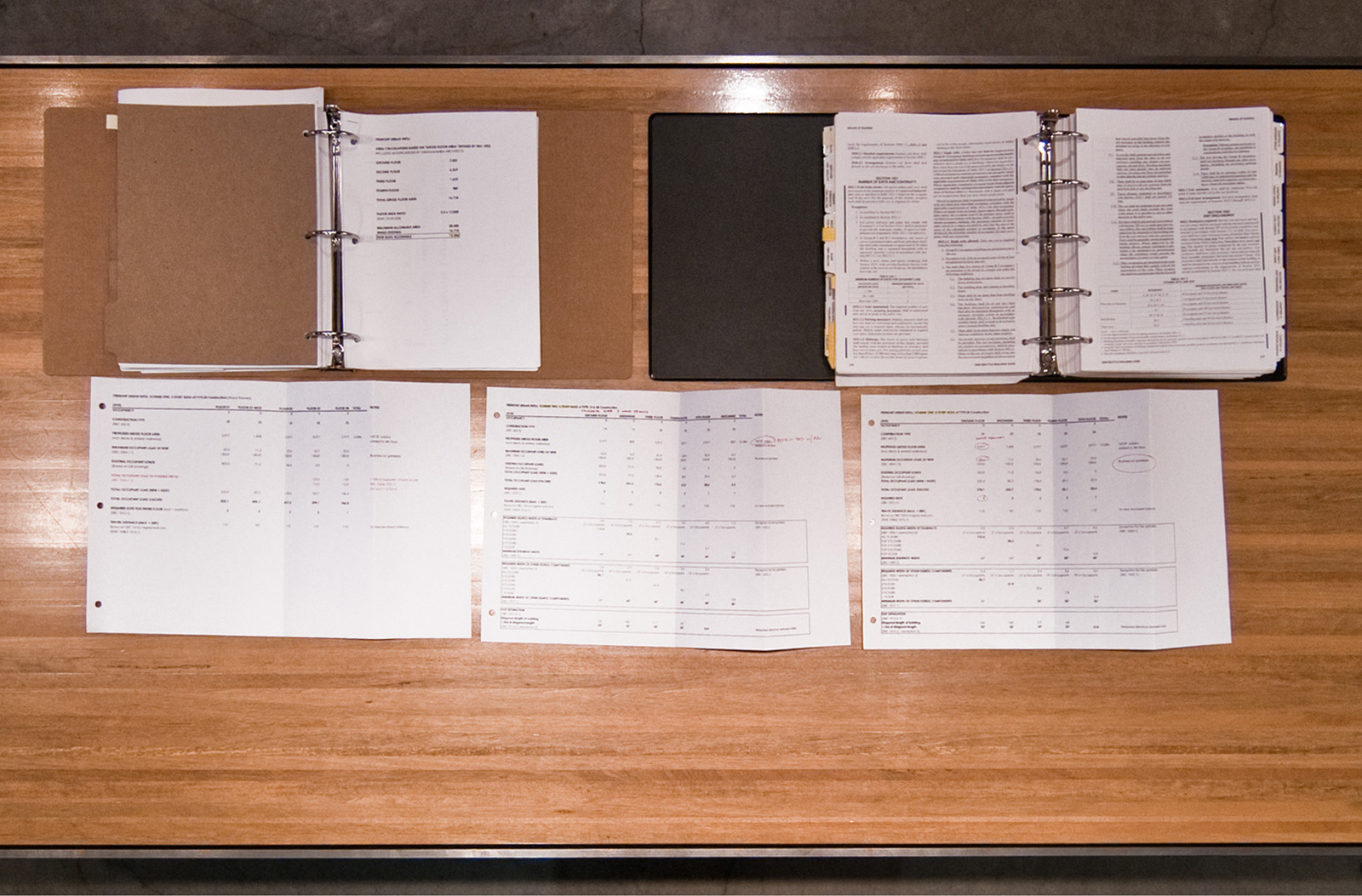
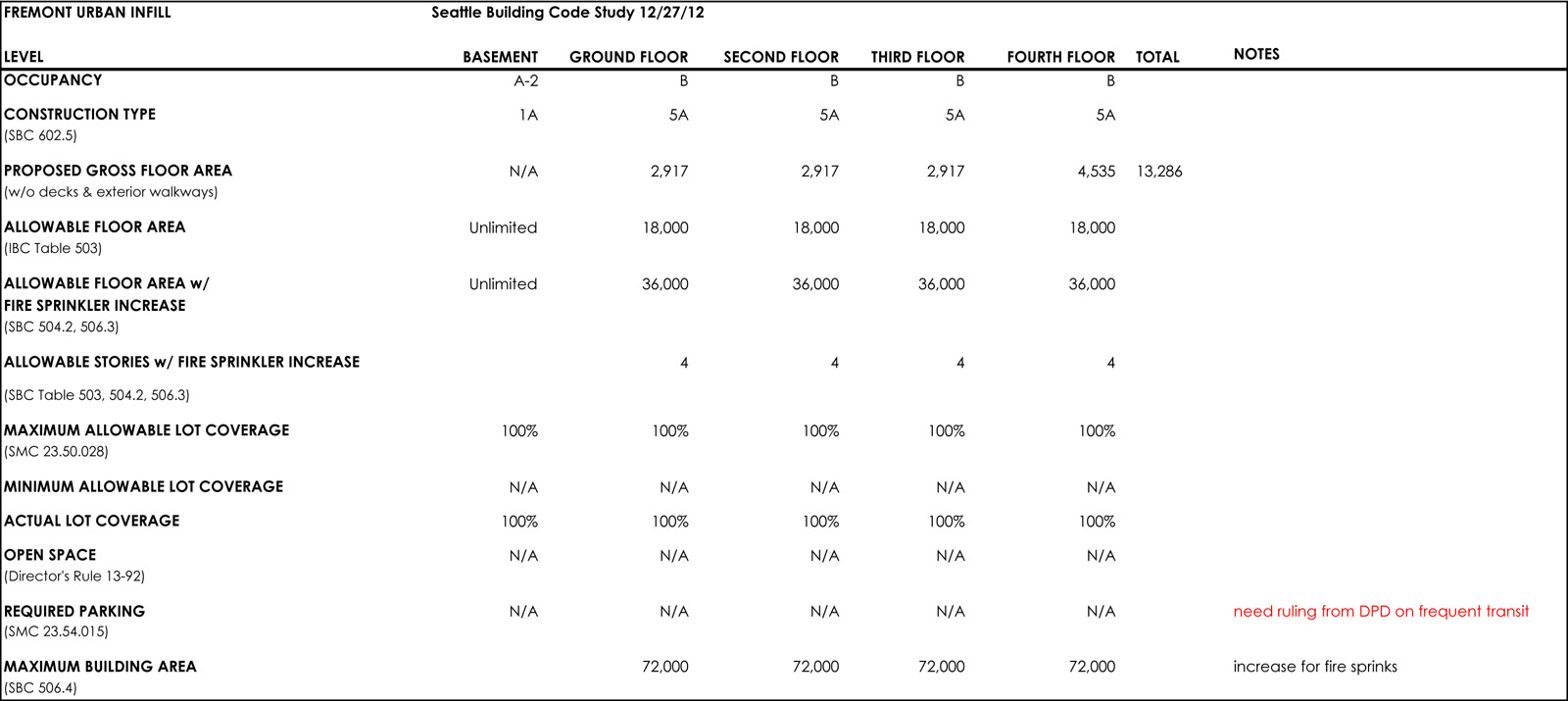
LAND USE AND BUILDING CODE COACHING
The amount of data gathered and interpreted from the various codes typically leads to a list of open-ended issues, questions and items requiring further clarification. Seattle offers 20 minutes of free land-use/building code coaching and longer appointments billed by the hour. A concise list of the most important questions typically allows the city to provide enough clarity to proceed on to the schematic design.
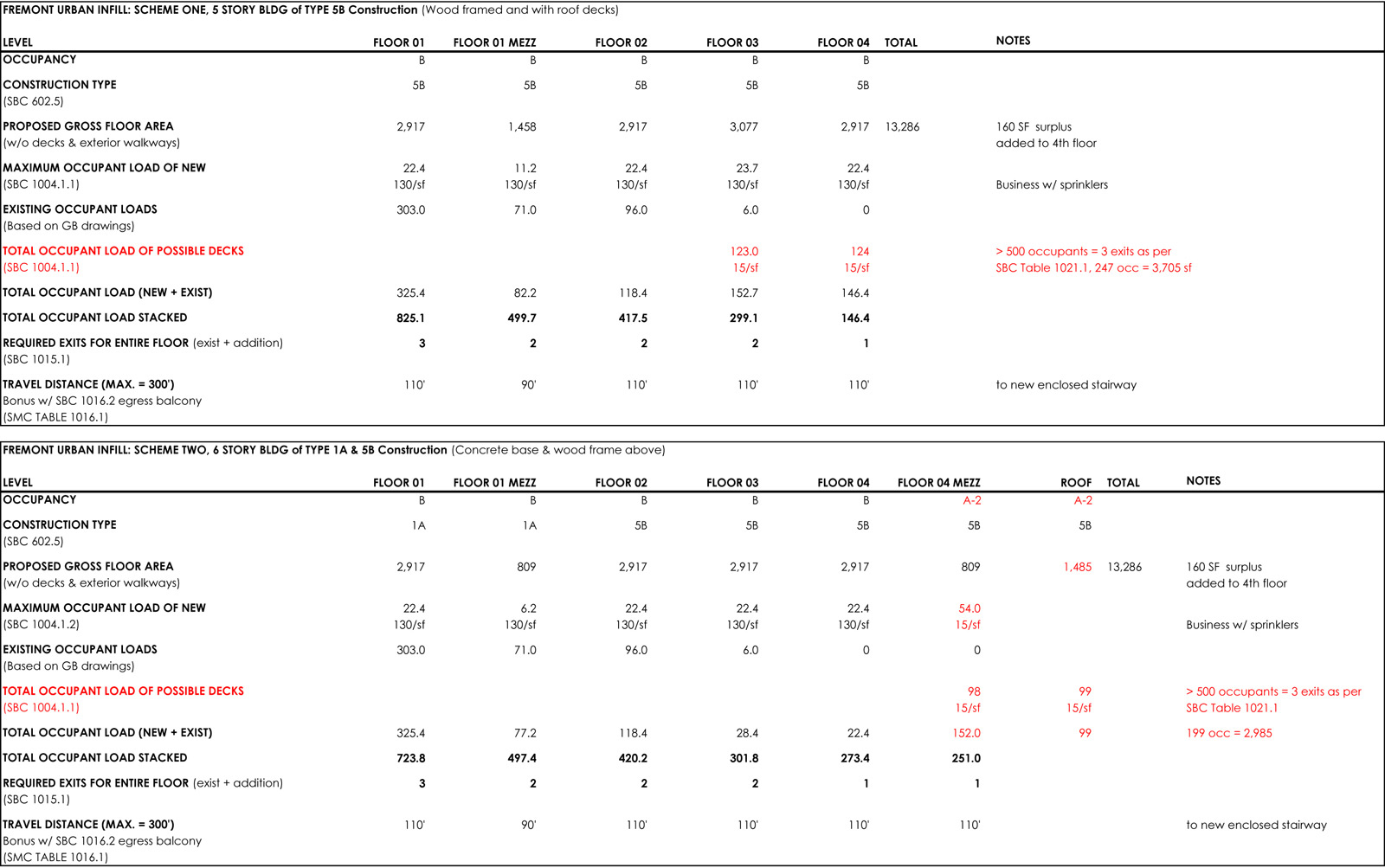
SCHEMATIC DESIGN
The design possibilities that result from the municipal code, building code, and coaching sessions are then explored and applied to physical form. We generate images like the diagrams below, which compare two separate designs based on different construction types, floor areas, building heights and paths of egress.

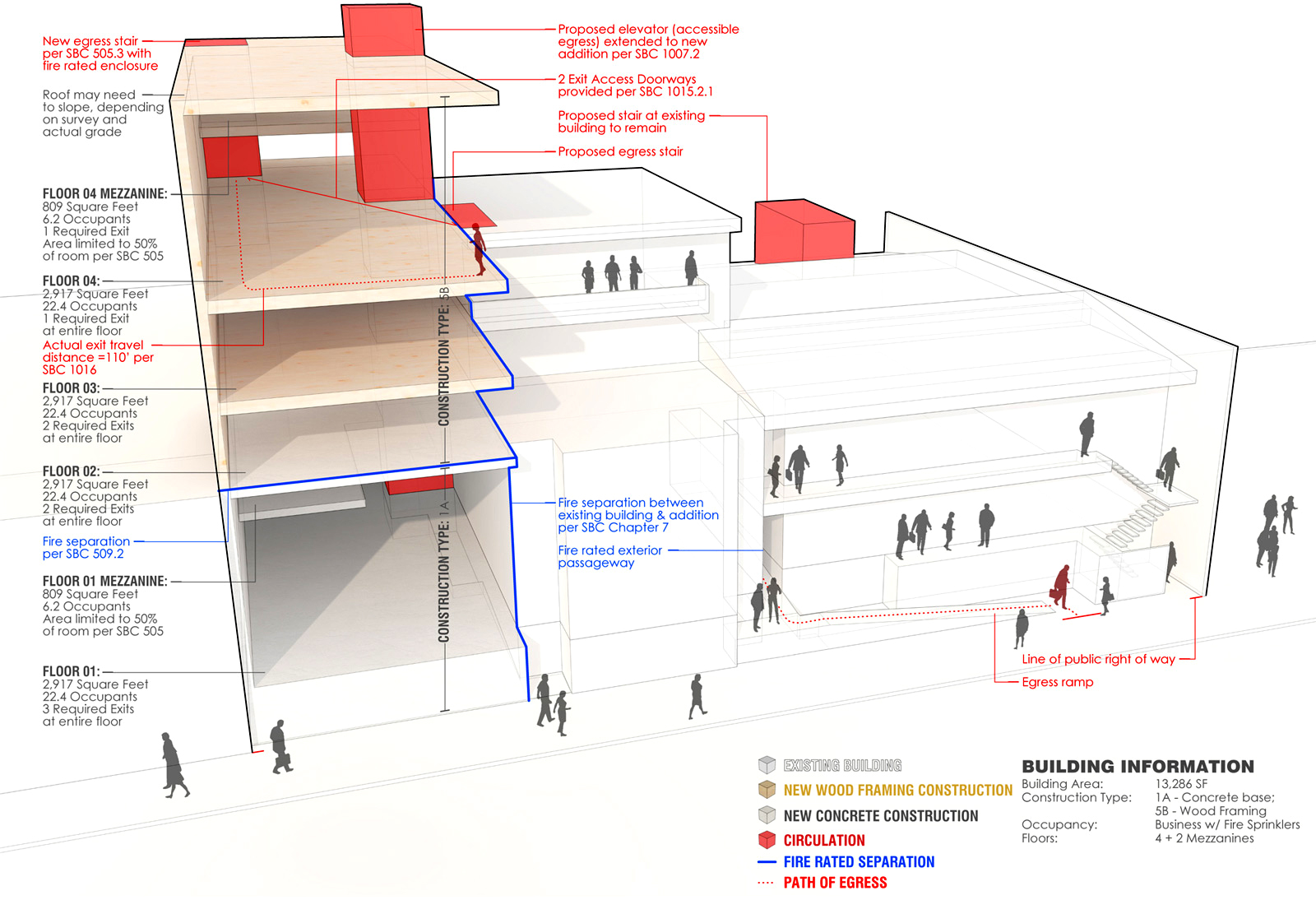
PRICING
To us, design is meaningless without at least some basic pricing guidelines. We pair the schematic design schemes up with a cost breakdown of everything we know and anticipate about the project. Our typical pricing exercises are an itemized list of all the different categories of construction including soft costs (permits, design fees, consultants). Given our diverse history of projects, we’re typically able to create pricing within 10% of what the completed project pricing will be. Clients have a variety of goals and aspirations, but typically dollars are one of the key levers for making decisions on how to proceed with the project.
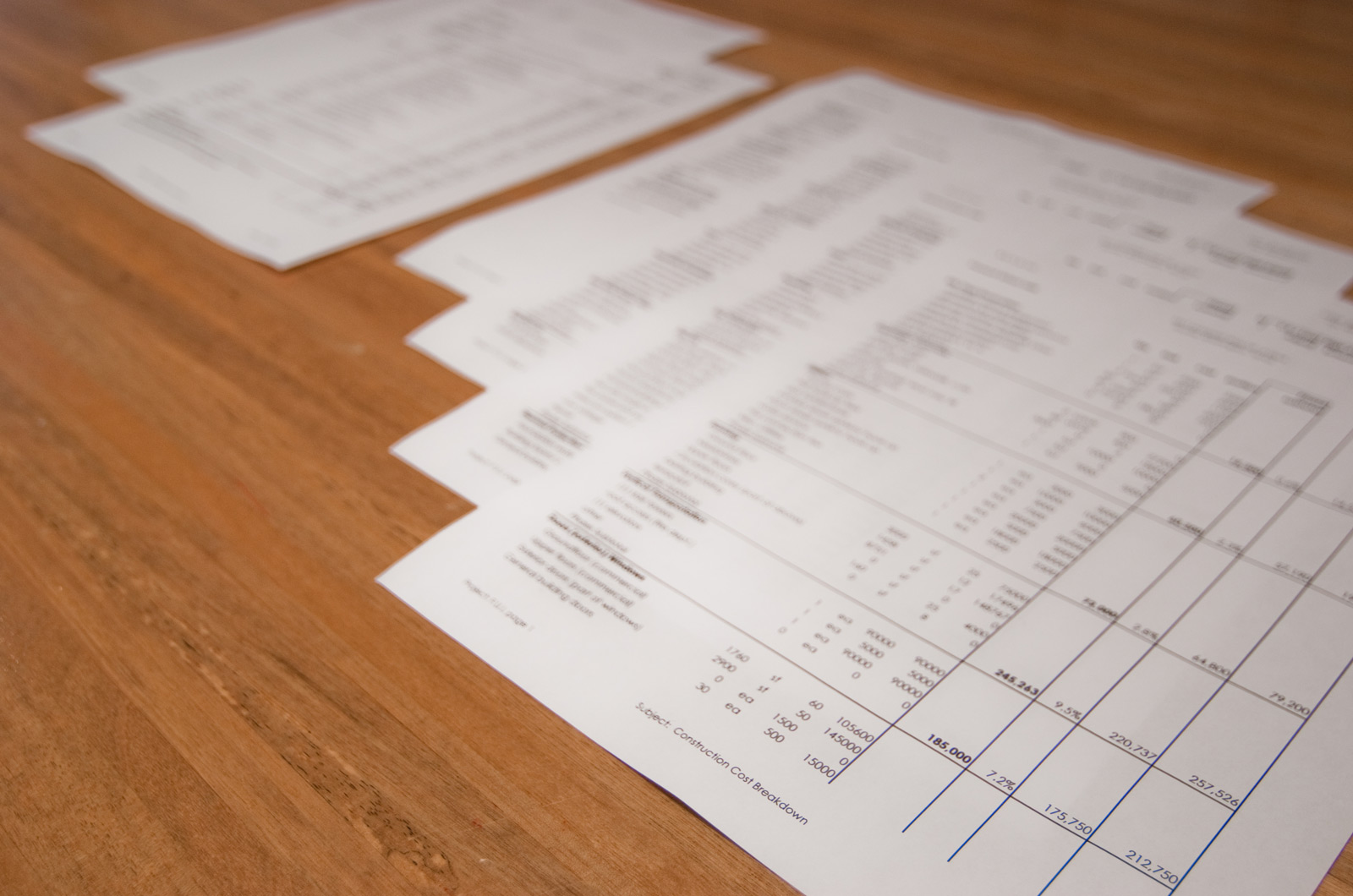
DELIVERABLES
The final schematic design package includes the condensed notes from the codes studies, minutes from the city coaching sessions, the critical code related spreadsheets, the diagrams illustrating the basic design possibilities and the cost estimates. It’s a tight, cohesive package that allows an owner or a development group to make sensible, smart decisions about doing good design.
Projects similar in nature include the Mountlake Terrace Center, The Ballard Lofts, and our Park Modern building. We’re looking forward to getting our minds around more work like this and we’ll be sure to cover it on the blog. Stay tuned, and cheers from Team BUILD.





